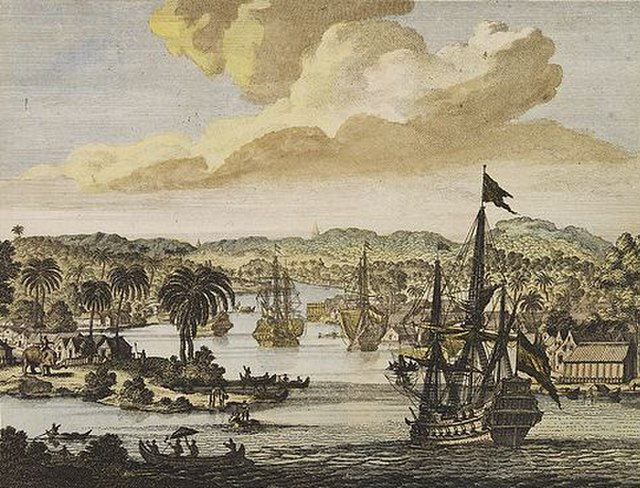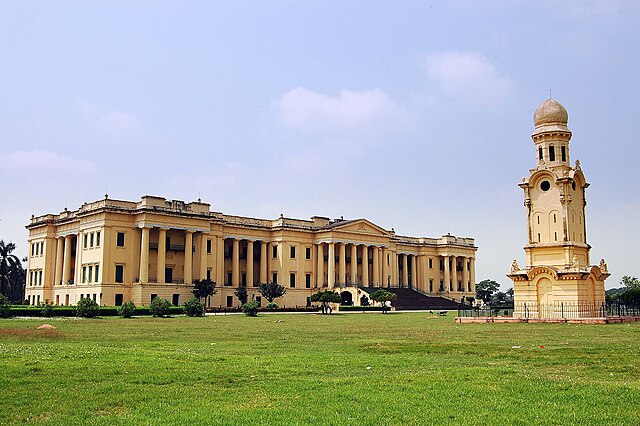Mirza Muhammad Siraj-ud-Daulah, commonly known as Siraj-ud-Daulah or Siraj ud-Daula, was the last independent Nawab of Bengal. The end of his reign marked the start of the rule of the East India Company over Bengal and later almost all of the Indian subcontinent.
Siraj-ud-Daulah
Bust of Siraj ud-Daulah by the Palashi Monument situated in Nadia, West Bengal.
A painting showing the Sang-i-dalan, Kala Masjid, the tombs all surrounded by the Motijhil Lake
Pindari's loyal to Siraj ud-Daulah carry out the Black Hole of Calcutta atrocity, 20 June 1756.
The Nawab of Bengal was the hereditary ruler of Bengal Subah in Mughal India. In the early 18th-century, the Nawab of Bengal was the de facto independent ruler of the three regions of Bengal, Bihar and Orissa which constitute the modern-day sovereign country of Bangladesh and the Indian states of West Bengal, Bihar and Odisha. The Bengal Subah reached it's peak during the reign of Nawab Shuja-ud-Din Muhammad Khan. They are often referred to as the Nawab of Bengal, Bihar and Orissa. The Nawabs were based in Murshidabad which was centrally located within Bengal, Bihar, and Odisha. Their chief, a former prime minister, became the first Nawab. The Nawabs continued to issue coins in the name of the Mughal Emperor, but for all practical purposes, the Nawabs governed as independent monarchs. Bengal continued to contribute the largest share of funds to the imperial treasury in Delhi. The Nawabs, backed by bankers such as the Jagat Seth, became the financial backbone of the Mughal court.

Dutch East India Company ships in Chittagong harbor, early 18th-century
Robert Clive meets Mir Jafar at the Battle of Plassey in 1757
Hazarduari Palace (Palace of a Thousand Doors) was home to the titular Nawabs of Bengal
Image: Murshid Quli Jafar Khan








